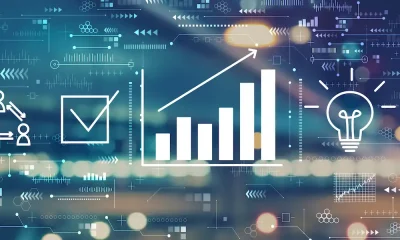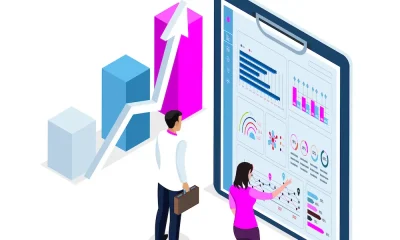Technology
How CMS And DAM Affects SEO

Choosing a content management system (CMS) often depends on features, interface, and customization options. However, do you know a CMS’s positive and negative effects on a site’s SEO? In this article, we look at the pros and cons of using a CMS and how you can help your site SEO by using a DAM for digital asset management.
CMS versus DAM
Your business likely needs a CMS and a DAM (digital asset management) system.
CMS
A CMS is for your website, and it enables you to create and publish content on your website. Not that long ago, all new content had to be added via hard coding, requiring a web developer.
The CMS put the power of adding content on a website into the hands of non-technical people.
With a CMS you can store digital files like videos and images text plus use its WYSIWYG (what you see is what you get) editor or block editor to create and publish content. It’s user-friendly interface is a step up from writing an email but it’s not a huge leap in complexity hence is the most popular CMS powering nearly 40% of all websites.
DAM
A DAM is for your company-wide use of visual content. Your business would store, share, and collaborate on media content in a DAM. Your branding collateral, marketing visuals including videos, latest social media visuals, whatever the DAM is where it should be stored and managed.
As your business reaches out more on social media, Youtube, video marketing, and PPC advertising, your third-party suppliers can access and upload data, and your business can manage each version.
Using A DAM For SEO
Using a Digital Asset Management (DAM) system can benefit a website’s Search Engine Optimization (SEO) efforts.
While a DAM system itself doesn’t directly influence SEO rankings, it can indirectly contribute to improved SEO by enhancing various aspects of your website’s content and user experience with the following:
- Improved Site Performance and Load Times: A DAM system often includes image optimization and automatic resizing features.
- Optimized Images and Alt Tags: A DAM system can help you easily manage and organize your images.
- Consistent Branding and Messaging: A DAM system helps maintain a consistent brand image across your website by providing a central repository for approved and up-to-date visual assets.
- Enhanced Metadata Management: Metadata associated with digital assets (titles, descriptions, keywords, etc.) can be managed more effectively through a DAM system.
- Reduction of Duplicate Content: A DAM system can help you identify and eliminate duplicate or near-duplicate content, which can negatively impact SEO.
- Structured Data Implementation: Some DAM systems allow you to integrate structured data markup (such as Schema.org) directly into your assets.
- Easy Content Sharing: A DAM system facilitates easy sharing of digital assets, making it more likely for other websites to link to your content. High-quality backlinks are an essential SEO factor.
- Centralized Management and Collaboration: A DAM system enables teams to collaborate more efficiently on content creation and management.
- Long-Tail Keyword Optimization: Well-organized digital assets can provide opportunities for optimizing content for long-tail keywords, helping you target specific niche searches and attract more relevant traffic.
- Adherence to Best Practices: Many DAM systems have SEO best practices in mind.
CMS Good And Bad Effects
Here are some pros and cons of how a CMS can affect SEO.
Pros or positive effects
Content management and updates
A CMS makes it easier to create, manage, and update content regularly. Search engines favor fresh and relevant content, so having a CMS enables you to consistently publish new content, positively impacting your SEO efforts.
SEO plugins and tools
Some CMS products do come with SEO features. For example, working with Joomla, you can add more handy SEO features by using its specialized extension EFSEO. That will give you as much SEO power as this system can.
However, it’s no match to Yoast SEO for WordPress, despite WP having no good optimization features in its default configuration.
With CMS platforms offering plugins, extensions, or built-in tools that can help optimize your site for search engines, built-in SEO features are not required.
Third-party tools often provide features like meta tag optimization, XML sitemaps, friendly URLs, and more, which can improve your site’s SEO performance.
User-friendly URLs
CMS platforms often generate user-friendly URLs (also known as “pretty” or “clean” URLs) automatically, making it easier for both search engines and users to understand the content of your pages.
Structured data
Some CMS platforms facilitate the implementation of structured data markup, which can enhance your search listings with rich snippets, making your content more appealing to users and potentially improving click-through rates.
Responsive design
Many modern CMS platforms prioritize responsive design, which is crucial for mobile-friendliness. Mobile-friendliness is a ranking factor for search engines, and a responsive design can lead to a better user experience, potentially improving your search rankings.
Cons or negative effects
Duplicate content
If not properly managed, a CMS can lead to issues with duplicate content. For instance, using default settings or improper canonicalization can result in multiple versions of the same page, negatively impacting your SEO rankings.
Performance and speed
If not optimized correctly, some CMS platforms might add unnecessary code or scripts, leading to slower page loading times. Page speed is a crucial ranking factor, and slow-loading pages can hurt your SEO efforts.
URL structure issues
While many CMS platforms offer user-friendly URLs, some might generate URLs that are not optimized for search engines. Improper URL structure or dynamic URLs with excessive parameters can impact your SEO.
Technical limitations
Certain CMS platforms might have technical limitations that prevent you from fully optimizing your website for SEO. Customization options may be limited, restricting your ability to implement certain SEO best practices.
Security and updates
If you’re not diligent with updates and security patches, your CMS might become vulnerable to hacking or malware attacks. This can negatively affect your site’s performance, including its SEO rankings.
Final Thoughts
Today using A DAM and a CMS for your website makes sense. Do your research and choose a CMS and DMS that provides the most value for business and site.
Use the points covered in this article to help you make the right choice, and if in doubt, get professional advice from a database administrator or SEO consultant.
Keen to read more? Security is a fundamental requirement for sites today. Using an offsite solution like Amazon S3 for data protection is recommended. SEO is a major strategy for attracting site visitors.






